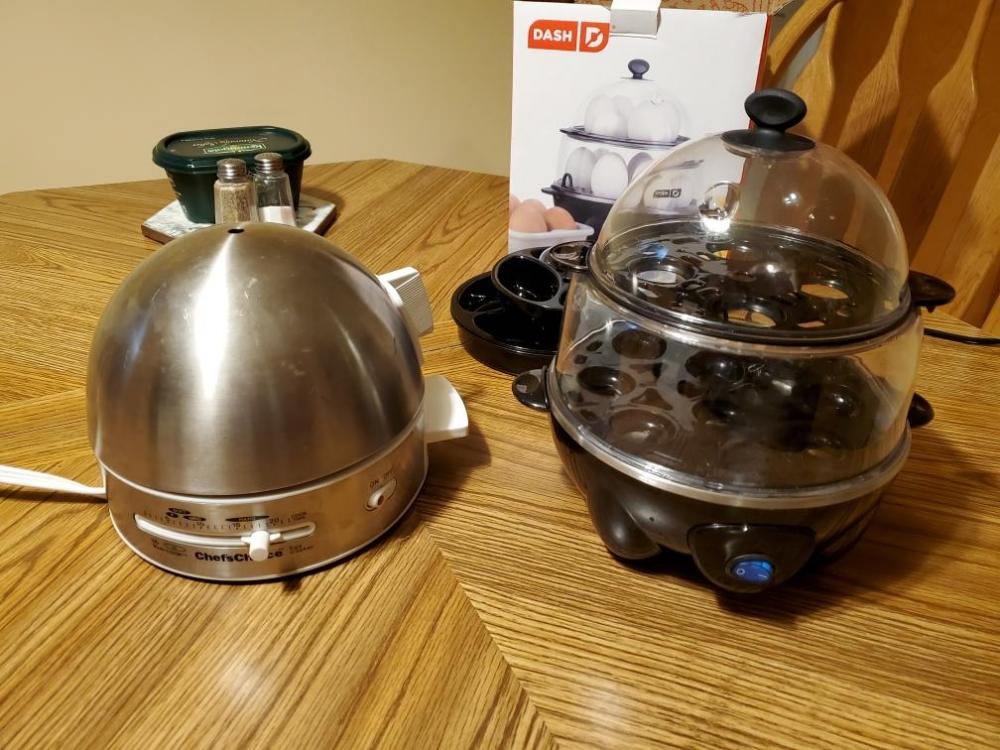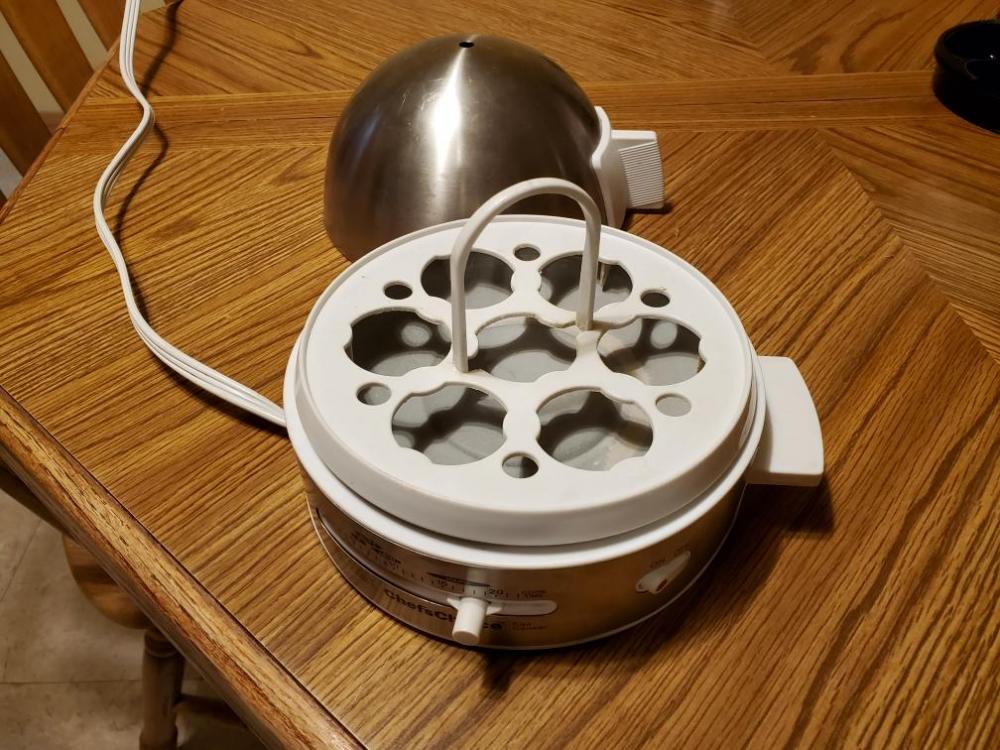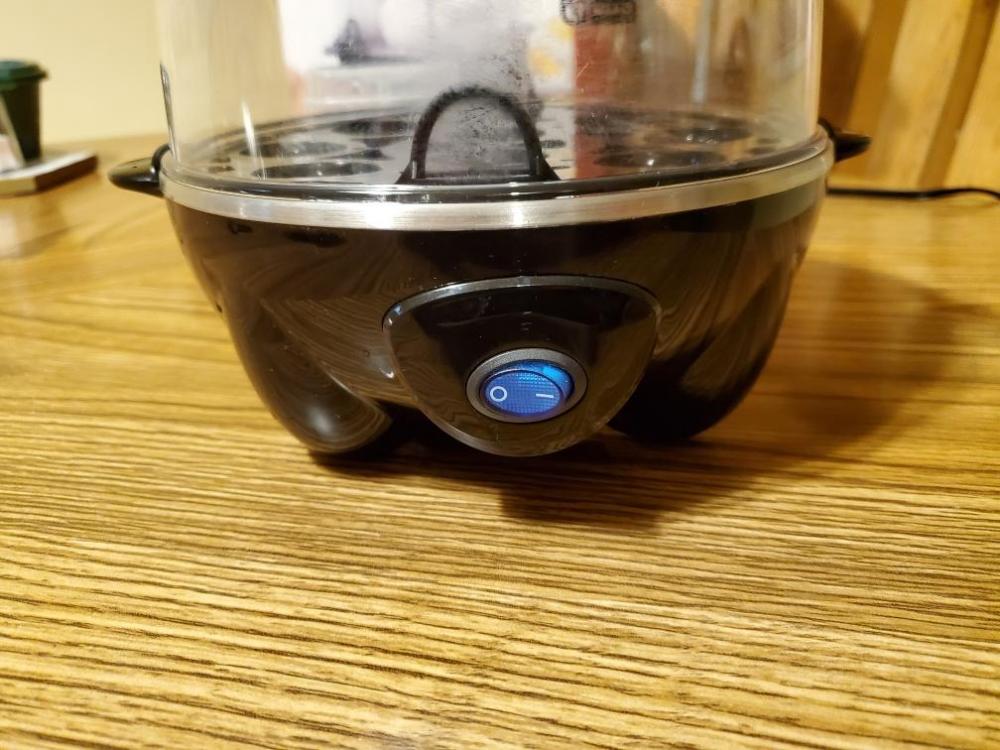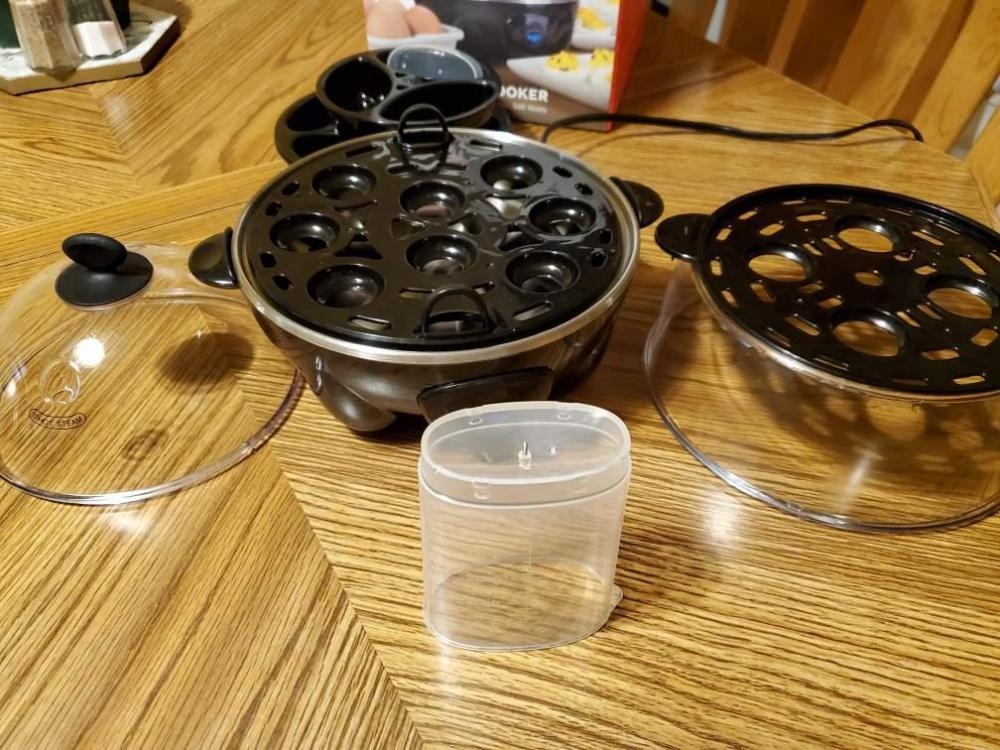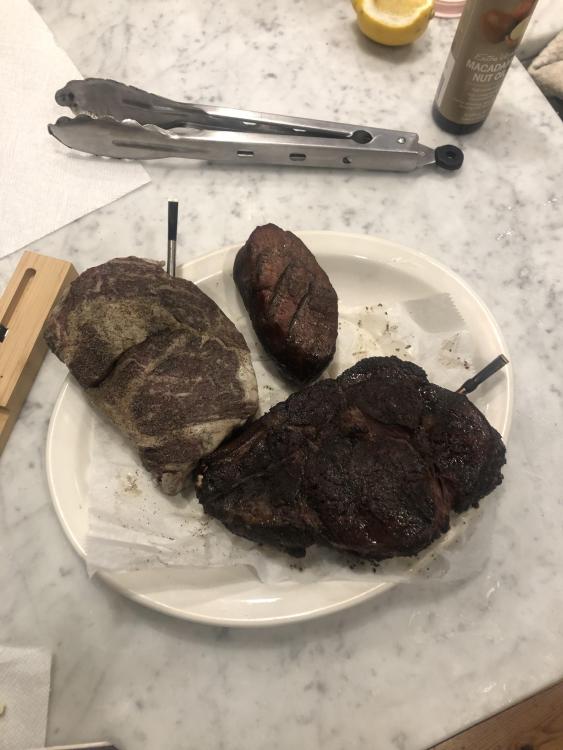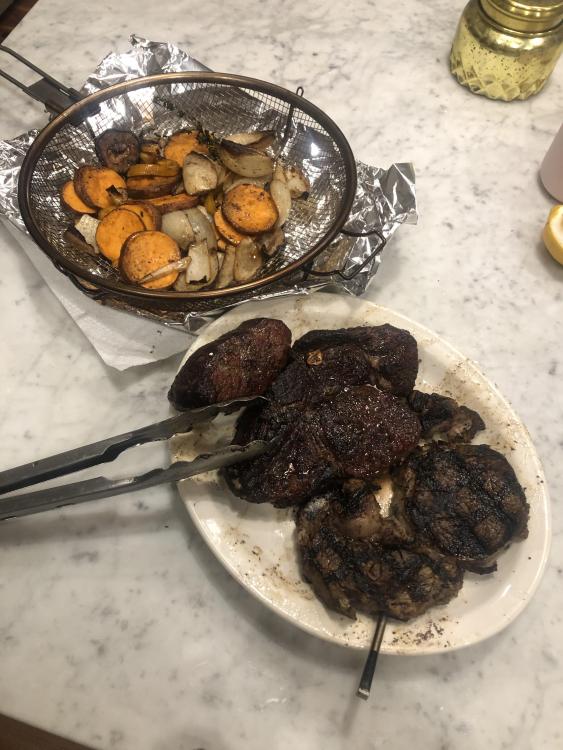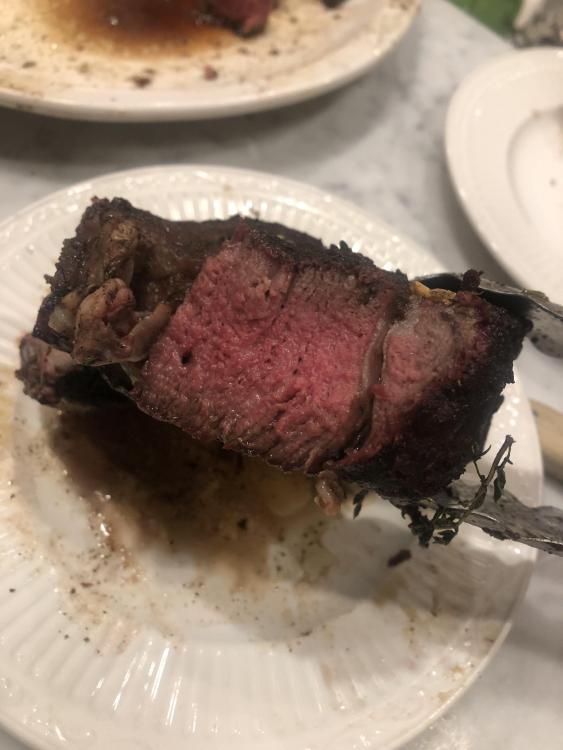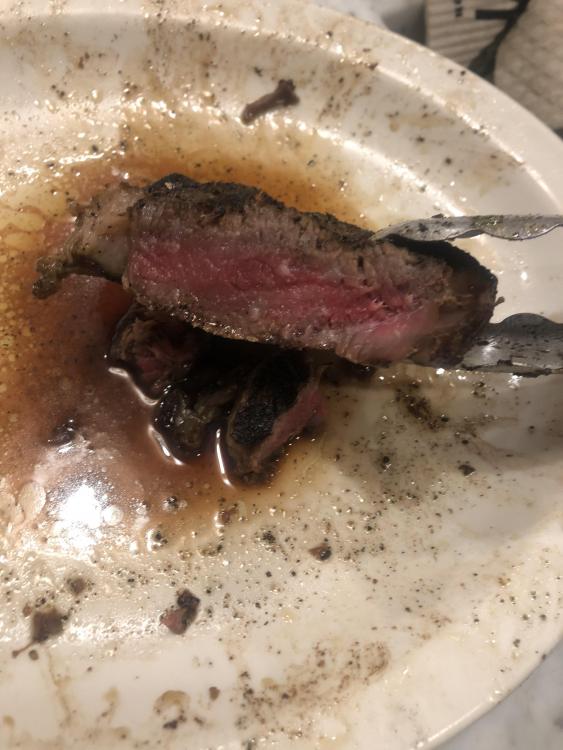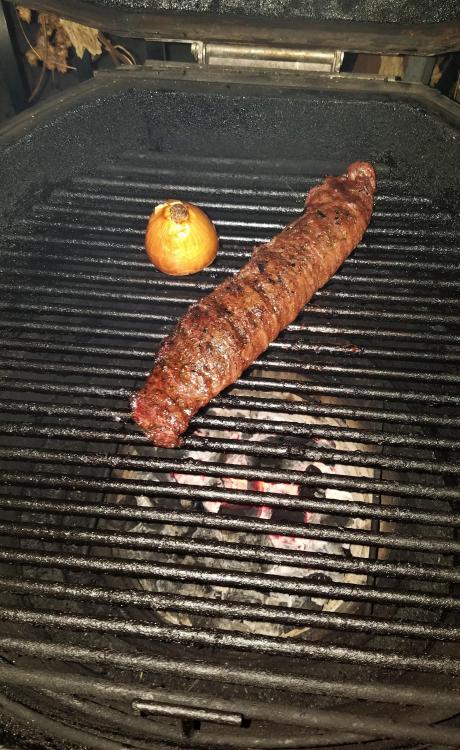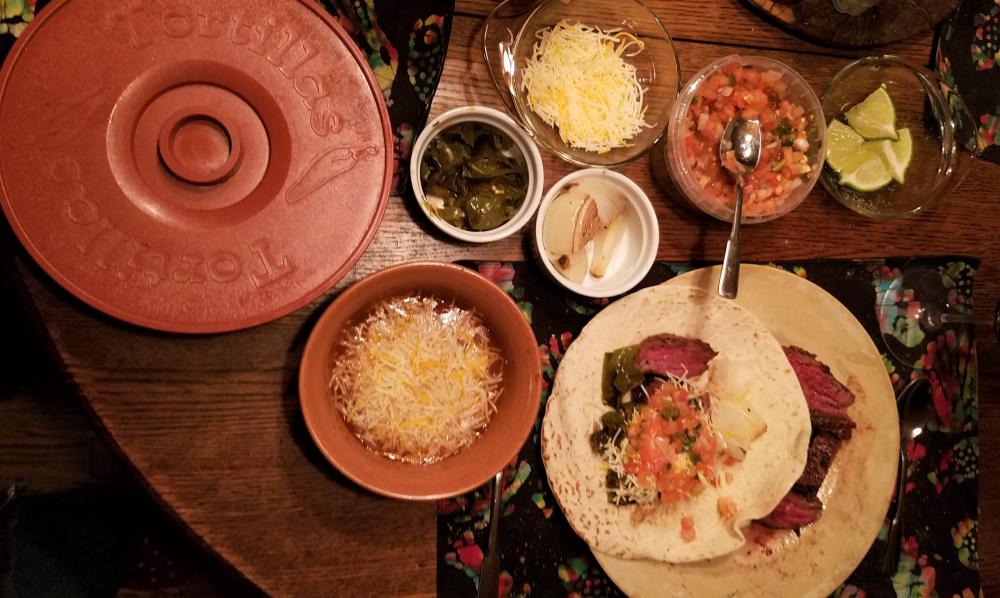Leaderboard
Popular Content
Showing content with the highest reputation on 01/16/2020 in all areas
-
...and here I was expecting a discourse on BGE vs. Kamado Joe — two egg cookers.3 points
-
We just bought the 23 Ultimate. My first cook was a smoked brisket for a tailgate (26 people). We nailed it. Go big or go home.3 points
-
From the good ole internet: Some people use a pin to make a small hole in the shell at the large end of the egg before they put the egg in the water. At the large end of each egg is a small air space. When you hard cook an egg, this air heats up, expands, and escapes through pores in the shell—but not before the egg white sets. This leaves the egg with a flattened end. The best explanation that I could find for the decreasing amount of water being added when cooking more eggs was that the higher number of eggs increases the cold surface area inside the cooker, condensing the steam back to water, which drains back to the heating element to repeat the cycle until all the water/steam eventually escapes out the top as the eggs warm up/cook. So, with fewer eggs, more steam escapes early in the cooking process, so you need more water to start with to compensate for the added losses.2 points
-
Pot smoking didn’t mellow him. At. All. ‘Course, around here that means something else entirely...RIGHT??2 points
-
YOU'RE Seven Shuffles??? I've been shuffling EIGHT times for years because I never believed you!2 points
-
If one can come by preserved lemons (bought, or better yet, homemade), the most famous chicken tagine in Morocco is with olives and preserved lemons. One can Google many recipes. They're all pretty similar, affected more by ingredient quality and chef technique than the list of ingredients. These recipes all look authentic to me, similar to what I do. I prefer bone-in thighs, and both coriander and parsley, and I have a heavy hand with the saffron. Moroccan Chicken Tagine with Preserved Lemons & Olives CHICKEN, PRESERVED LEMON AND OLIVES TAGINE – CHICKEN MKALLI Chicken, Olive, and Lemon Tagine (Djaj Mqualli) As for the tagine clay cooking vessel, it is unnecessary. It is designed for cooking over a slow charcoal fire. Use whatever you'd use for a French stew. However, be aware that in Morocco (where I took a few lessons) they have mastered browning a wet mixture through a clay pot, without burning that same mixture. The idea is pretty obvious, if one pictures how one burns food in general: It begins to stick to the bottom of the pot, and is left unattended long enough to burn. The Moroccans have mastered this effect, and catch it in time. (Without lots of experience, this window is about as "blink and you'll miss it" hard to time as catching the al dente transition for US dried pasta. There's a reason people pay more for Italian pasta. Mexicans would let the burn go longer, but I digress.) Instead, brown the chicken separately to your satisfaction (or not) and then cook gently to avoid burning. In my twenties, I used to learn factoids and then be on alert to avoid being scammed by people who misunderstood these factoids. I learned that there are two kinds of tagines, for cooking (unglazed interior lid), and for serving (decorative glaze on all surfaces). One could only find the serving kind for sale, which somehow offended my developing sensibilities. I somehow made life an Indiana Jones contest to find the authentic. Like all things twenties, I was an idiot, and had this exactly backwards. Cooking is all theatre. People's tastes are less educated and discerning than ours, so they look to visual cues. (This principle guides all fancy restaurants.) Serving in a tagine is great theatre, even if cooking in one has only a faint effect.2 points
-
Even though I was copying from a spreadsheet, I checked my math again before posting. I figured (1:20) * (1:20) = (1:440) could already wear out my welcome, so I left it out: 18 grams at 1:440 is 18/441 = .0408 grams of ascorbic acid. As a fraction of one kilo of flour, this is 40.8 parts per million. I have multiple sieves. My favorite combination is a 12 inch No. 25 test sieve over an 8 quart Vollrath bowl. Both are more expensive than alternatives, but worth the money. Gilson 12-Inch (305mm) ASTM E11 Test Sieve, All Stainless Steel, No. 25 (710µm) Opening Size, Intermediate Height (V12SI #25) Vollrath 69080 S/S 8 Qt Mixing Bowl Extraction is a variable in my spreadsheet, currently set to 85%. This however depends on the grinder and its condition and setting, the grain mix, and how completely one sieves. If I were sharing my spreadsheet with others, I'd add an obsessive/compulsive index variable. And I do use some flours (semolina, white) that aren't home ground. Currently my bread is 65% home ground. As for mixing, I don't believe that there are losses differentially favoring or discriminating against ascorbic acid. I use coarser (less expensive) sieves for mixing, alternating between two 8 quart bowls. In fact, I'm cursed for life to sieve seven times because I'm a coauthor of a famous math paper on card shuffling (Google 'Seven Shuffles'; I'm Dave). An uneven distribution of ascorbic acid is a real risk here. A greater risk, in my experience, is the mix going stale after a few years. I don't understand how this is even chemically possible (I should be able to use ascorbic acid found in Egyptian tombs, right?), but I've found it necessary to buy fresh ascorbic acid every now and then, based on observation and experience. I even have very coarse sieves intended for making couscous from scratch. Still on my todo list, and I'm instead in a Mexican phase now.2 points
-
TY! I obsessed about the KK for 3 years ... finally pulled the trigger. No buyers remorse : )2 points
-
My meater...one over from my thumb, works every time, I've had it for years.2 points
-
2 points
-
Thanks All. I had to fly up North for business and landed back down South last night in the middle of a raging storm. I am sure we were safe throughout but I was sufficiently unsettled to be looking for some comfort food when I got home. Happily, the salt beef was sitting in the water bath, nice and warm on my return. Nothing fancy - a nice, comforting salt beef and pickled cucumber sandwich on rye. I made the 20% ish rye Tartine bread. Not enough rye for me so I will be trying another recipe this weekend. The salt beef? A little grey because I didn't use salt petre. Very tasty. Needs more fat. Back to brisket next time.2 points
-
Yup. My MEATER stopped working and I returned it to the company for a fix. They looked up my online data and said I had taken the device over the recommended temp and that I had voided the warranty. Thankfully, they were nice and replaced it anyway.2 points
-
Great looking dish. I've always wanted to try out a tagine. I must resist buying one, I must resist..........2 points
-
Tried the Meater for the first time tonight. I am very impressed. Really easy app with good functions to preset different meats, cuts and also adaptive for tailoring. Boned out lamb shoulder. seared first down near the embers with a bit of sea salt and cumin. Then finished up high with the Meater in place and added garlic and basil after the sear so it didn’t burn. The time left until target temp is a great function and the ambient temp on Meater read 10 deg f( 5 deg C) less than the Tel Tru in the dome. That’d be about right given there was a tray under the lamb for indirect indirect finish. I had to leave for an hour as soon as I pulled it off the KK and by the time got back the kids had devoured most of it. Here is my leftovers plated. Looking forward to trying this further with the rotisserie. Sent from my iPhone using Tapatalk2 points
-
The brisket turned out nicely, looking forward to this for lunches this week Sent from my iPhone using Tapatalk2 points
-
I love hard boiled eggs. Eat them all the time. A couple years ago, on one of the on-line cooking sites, I saw an electric counter top egg cooker that looked interesting. Checked it out and found great reviews, so I bought it. It is a Chef's Choice, 7 egg electric egg cooker. Have been using it for 2 years and it works great. Pour in some water, put in 7 eggs, set the degree of doneness, turn on the switch and 25 minutes later the alarm sounds and they are ready. Simple, no timing issues, consistent results…….life is good!!!!! This past Christmas a well intention'ed family member gave me a brand spanking new……………….Dash Deluxe 12 egg cooker. I was excited to have the ability to cook more eggs at one time but this cooker is challenging my logic of how things work in the universe. Maybe one or more of our esteemed KK members can help me understand. This new cooker only has an on-off switch. It has an alarm that sounds when the eggs are done. The adjustments for doneness and the total number of eggs you cook is dependent how much water you place into the cooker. This is where my understanding issues begin.............. - If you cook 6 hard boiled eggs, you put in 5 oz. of water and it takes 18 minutes before the alarm sounds - If you cook 12 hard boiled eggs, you put in 3.5 oz. of water and it takes 20 minutes before the alarm sounds. In my lame brain logic………..with a single temperature setting on this unit……you should need more water for more eggs. And why does less water take more time before the buzzer sounds???? Is it the density of the additional eggs that causes the cooker to take more time to cook them????? Wouldn’t less water boil out/steam out sooner and then cause the cooker to just bake the eggs (like an oven)??? Is it possible this new cooker is monitoring the internal temps in order to do the timing? With the single temp setting on this cooker the water appears to boil/steams out at the same rate. The upper rack of eggs are so far away from the heating plate and I can’t imagine the unit can sense them. Plus the lid is thin plastic and would not transmit temperature to the base unit. The base unit has to get hotter if the water is gone??????? In addition to the above questions….with this unit the instructions say to poke a hole in the bottom end of the egg (fat end) and place it upright in the cooker (comes with a pin to puncture the eggs). Why poke a hole in the egg before cooking and why the fat end????????? The other cooker doesn’t require that and the eggs turn out fine….with either the fat end or skinny up. The hole in the cooked eggs doesn’t seem make any difference in the peeling process after you cool the eggs in ice water compared to the eggs from the other cooker. So many questions!!!!!!! Maybe I should get a life and not ponder the whys & wherefore's of electric egg cookers but inquiring (sick) minds need to know!!!!! Thoughts….comments!!!!!1 point
-
1 point
-
For folks that are interested - that would be you, ckreef! (LOL). Here's my source for tajines - both kinds - cooking and serving. https://treasuresofmorocco.com/moroccan-kitchenware.html?p=2 You can get them from the same source on Amazon, too. https://smile.amazon.com/s?k=tajine&i=kitchen&rh=n%3A284507%2Cn%3A3737331%2Cp_6%3AAZ24I9M1PA8YH&dc&qid=1579198131&rnid=331544011&ref=sr_nr_p_6_1 @Syzygies- those recipes are pretty spot on. I had used up all my cilantro in the fridge or I would have added that at the end. The green harissa was my substitute. I like to use both the green and black olives (especially the oil cured ones). I have made preserved lemons in the past (not hard, just takes about a month in the heavy salt/lemon juice brine.) https://www.simplyrecipes.com/recipes/how_to_make_preserved_lemons/ Or be lazy like me and just buy them. https://smile.amazon.com/s?k=preserved+lemons+moroccan&crid=2QXXKDKHBY2OJ&sprefix=preserved+lem%2Caps%2C191&ref=nb_sb_ss_i_3_131 point
-
oops, yes, lid the saucepan when bringing water to a boil and during cooking.1 point
-
Wow; to much math and physics for me. Try this: To do hard "boiled" eggs; steam them. use a vegetable steamer basket Set it in a 3 qt saucepan, filled w/ water to just below steamer basket, bring water to boil. 18 eggs in, stacked up. 11-12 minutes later put into ice water, 10 min, then peel. adjust your cook time to desired yolk done-ness, this time gives you firm, but not hard yolks. we get perfect eggs everytime.1 point
-
Epic nicley done mate .did you mention Gunpowder Sent from my SM-T835 using Tapatalk1 point
-
Cooked two ribeyes and a filet tonight for the College Football Championship game. Wife had the filet which was reversed seared in a cast iron skillet with some thyme, butter, and garlic. The two ribeyes were cooked different. The smaller one was salted for 48hrs then straight seared for 6mins each side for an internal temp of 132 degrees. The bigger ribeye was salted 2 hours prior and indirect cooked until 130 degrees internal then finished with the filet in the cast iron skillet. I temp checked the top of the sear grates and cast iron skillet, they were at 720 degrees while the 32BB dome gage was at 500 degrees. The 48hr salted and regular seared ribeye was the best tonight!1 point
-
1 point
-
A tasty looking sandwich and you did it all. I just caught on today that your salt beef is our corned beef.1 point
-
Perfect, you are going to be overwhelmed when you get your KK and even more when you taste the food you cook on it.1 point
-
I did this the other way round. I bought the book on Amazon, thinking I would return it if I don't like it, and then I found the google preview. How interesting. I won't be returning the book when it arrives tomorrow. Thank you for the recommendation. At first I thought it was stupidly expensive at £47 in the UK. When I saw that it costs $165 in the US, it felt like a bargain by the time I added it to cart. I started to check your maths, just for the hell of it, even though I know that is your area of expertise. Then I thought about how very very small the amount of active ingredient there would be in the sifted flour and how much might be lost through sifting. Do you really see a difference when you do this? I guess you do, otherwise you wouldn't bother. I do not have your scientific sieves for the fresh milled flour. So far I did an initial sift with my standard home sieve and ended up taking out about 10% of the weight. Am I right in guessing that about 75%-80% extraction is a good target?1 point
-
There is a professional textbook by Michel Suas that solved a problem for me that no popular book addresses: Advanced Bread and Pastry A Professional Approach (The depth of this book can be intimidating. It reveals that a trained baker can understand their craft as well as any professional in other domains.) The issue was the poor performance of "green" (as in young) flour, freshly-ground flour that has not aged. As Suas states, We of course do not want to age freshly ground flour for 2-3 weeks; besides the inconvenience, the germ that we leave in would go rancid. Even dough left in the fridge a day or two can turn an unappealing grey. Suas also notes that a long first fermentation will naturally increase dough oxidation, offsetting somewhat the ill effects of using "green" flour. Everyone's technique is different, and absolutely everything comes into play, in determining the extent that this is a problem. Hydration? Grind fineness? Fermentation schedule? I have learned to not even bring this up at farmers markets where I see bread sold from freshly ground flour. Usually the baker is oblivious to this problem, defensive when it is even suggested, and has found a way to nevertheless produce loaves with the correct appearance. This reminds me of asking food professionals about "pine mouth" toxicity from wrong species of pine nuts; any pine nut that isn't $50/pound is from the wrong species and a crap shoot. It's easy to understand this ignorance; I have many Mexican recipes that call for avocado leaves, and I was about to plant the most frost-hardy variant I could find, until I read Diana Kennedy's accounts of leaf toxicity in avocado variants not grown in Oaxaca. Now I don't know if I can trust avocado leaves in a restaurant. Some Mexican restaurants in the US even use pine nuts, too. My questions are likely to get me escorted to the door. But I digress. I was pushing the boundaries of reasonable hydration for whole wheat loaves, attempting artisan technical results that usually require somewhat less extracted flour (a Lionel Poilâne loaf is my holy grail), and my loaves were coming out like flying saucers. Then I discovered the Suas passages via Google Books. (I have since bought his book.) 40 ppm is 40 parts per million. Yikes! How does one do that, in a bakery or a home kitchen? We're not science labs here. Suas recommends carefully mixing and cutting twice with white flour, to achieve a mixture one can actually weigh on a gram scale. I mix ascorbic acid 1:20 with white flour, sieve multiple times to mix well, then mix some of that 1:20 with white flour to obtain a 1:440 blend. (There's unfamiliar ratio math here: (1:20) * (1:20) = (1:440), which we can check as 21 * 21 = 441.) For my standard recipe based on a kilogram of flour, I mix in 18 grams of this 1:440 blend. This has been an easy habit, and I no longer experiment with leaving this step out. Others might not find it necessary, but I offer it as an option, in case they're experiencing issues that they can't resolve.1 point
-
That looks terrific tony great winter warmer .I'd eat that in summer too Sent from my SM-T835 using Tapatalk1 point
-
Is this heat sensitivity a concern when spit roasting over direct heat? I am usually doing this with dome temp around 180C- 200C( 360f- 400f) for the rotisserie set up. I have assumed the rotation would give the probe a break from the direct heat.1 point
-
1 point
-
You are no chance of resisting! [emoji23] I’m expecting photos within the month. Tasty looking dish Tony Sent from my iPhone using Tapatalk1 point
-
Exactly, it is important to shield the end of the probe that is not in the meat from the direct heat of the fire.1 point
-
Tasty dinner, Tony, great call on the hummus. It has been ages since I've used my tagine, maybe it's time to drag it out. Speaking of dragging, I've been dragging my butt around with a miserable cold. It seems to be getting better and this tasty dish has my taste buds activated.1 point
-
1 point
-
Very nice. A word of caution - those sear temps are a bit high for the MEATER probes. Would hate to see you damage them right out of the gate.1 point
-
Bucked up and wrestled the frozen cover off the KK last night (freezing rain and snow over the weekend) to do a nice fajitas dinner using a skirt steak (Thanks, Jon!) marinated in tequila (why not?), lime juice/zest, cilantro, green onion, garlic, EVOO and SuckleBusters Gunpowder. On the KK, direct, with mesquite @ 350F. Plated up with all the fixings, including some Hatch chiles that I'd roasted and put up last summer, and a nice bowl of chile beans (under the cheese!)1 point
-
A couple of our US Forestry Service Firefighters from Alabama just got over there to help. We are praying for Australia.1 point





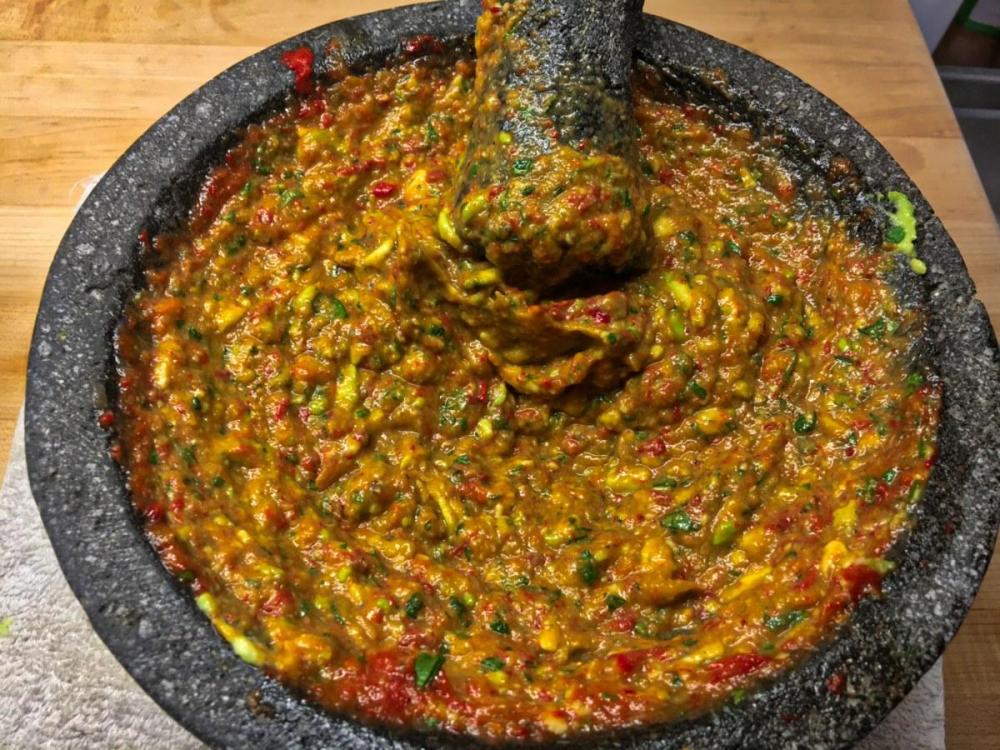
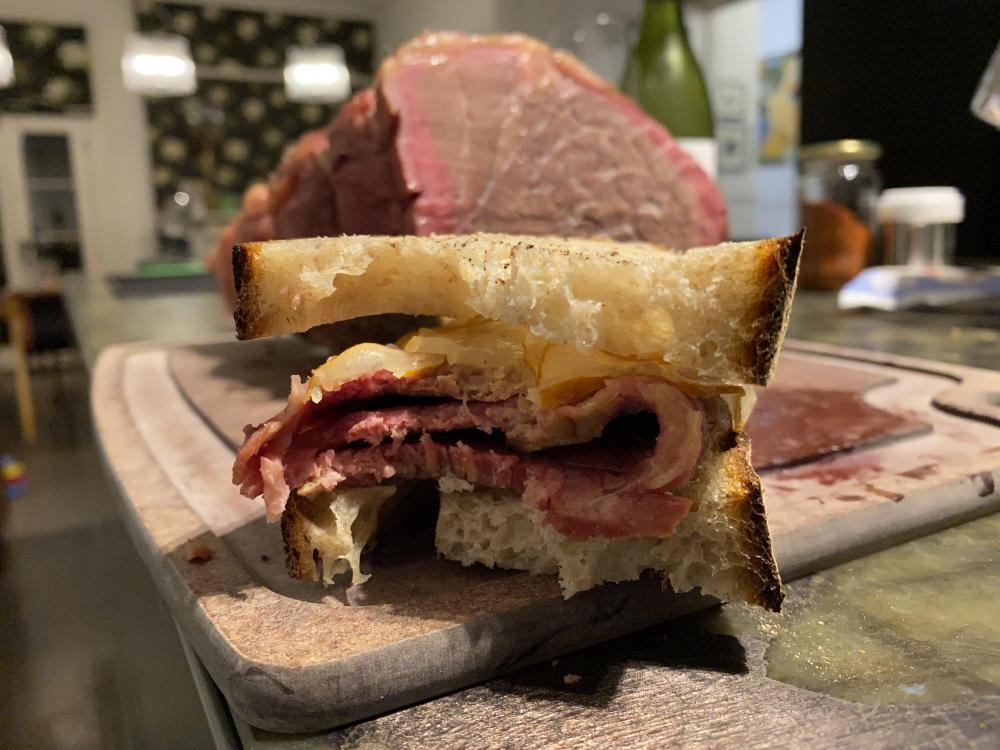

Bull.thumb.jpg.50d347aabd71178c9d9a16b7663cfa1a.jpg)

